JAPANESE KILNS | POTTERS
| FAMOUS JAPANESE POTTERS with MILTON MOON | PILBARA
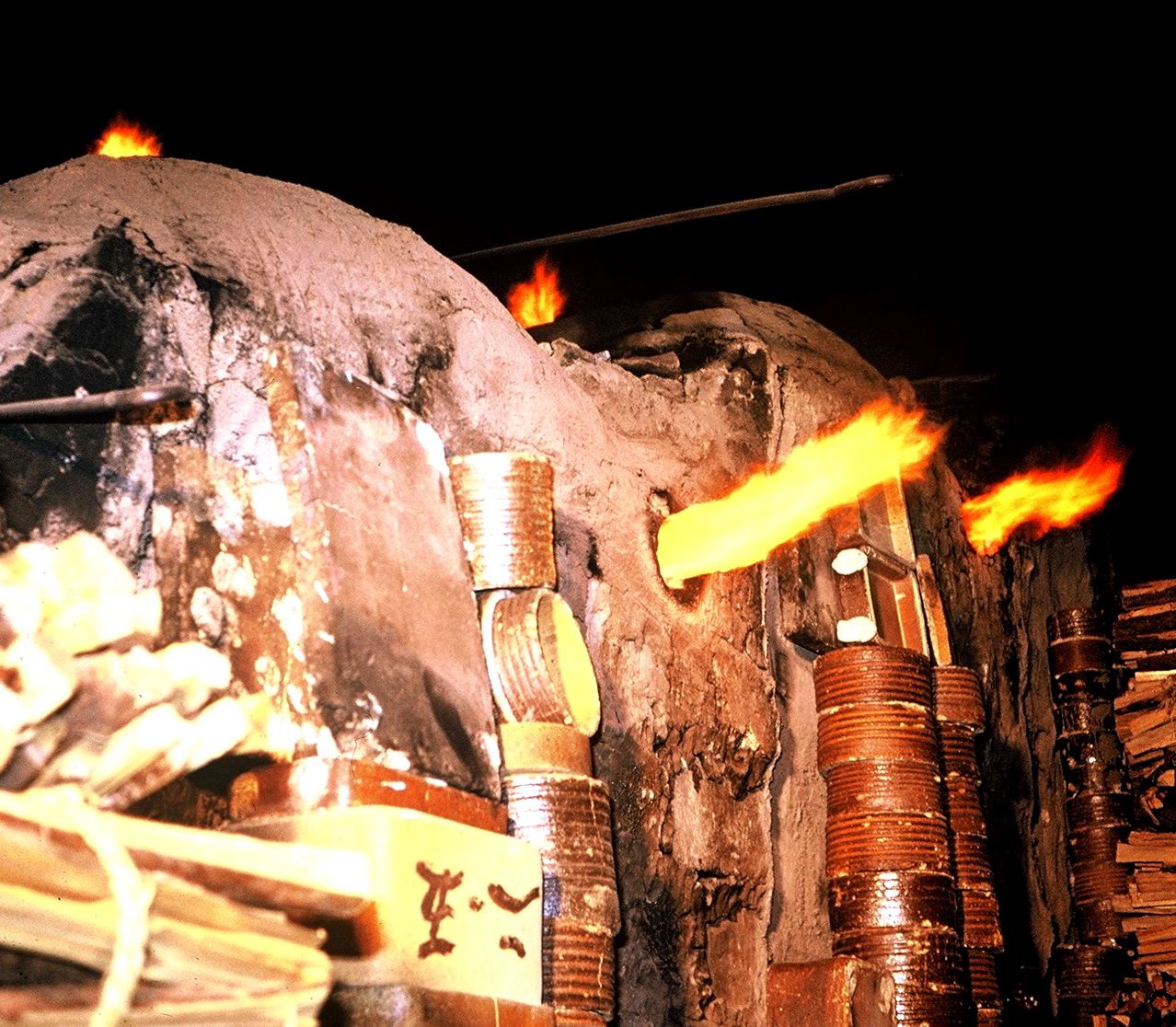 Kiln-firing at night
in Kyoto, Japan.
Kiln-firing at night
in Kyoto, Japan.
One of the few remaining wood-fire kilns in Kyoto. Close to a half century
ago kilns were being relocated to the country-side for environmental reasons.
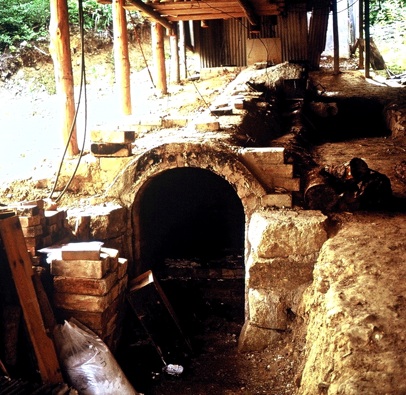
This kiln is called a Hebi-gama and belonged to Fujio Koyama
at his home and workshop in Gifu.
|
|
 Wood-fire kiln in Kyoto
Wood-fire kiln in Kyoto
|
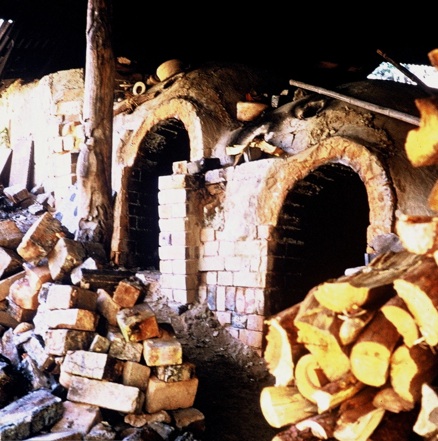 After the firing rewards
hopefully follow
After the firing rewards
hopefully follow
|
|
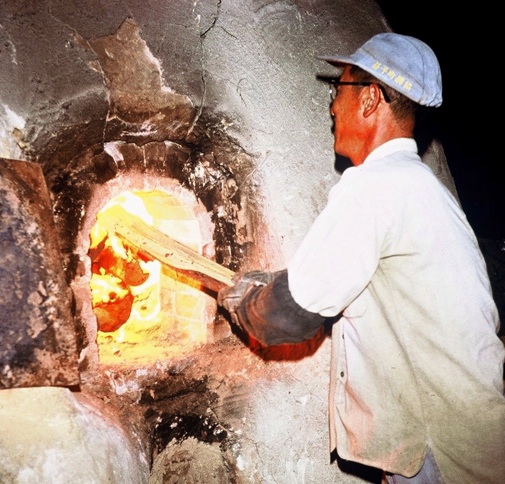 Kiln firing at the workshop
of Tatsuzo Shimaoka in the mid seventies, forty years ago.
Kiln firing at the workshop
of Tatsuzo Shimaoka in the mid seventies, forty years ago.
|
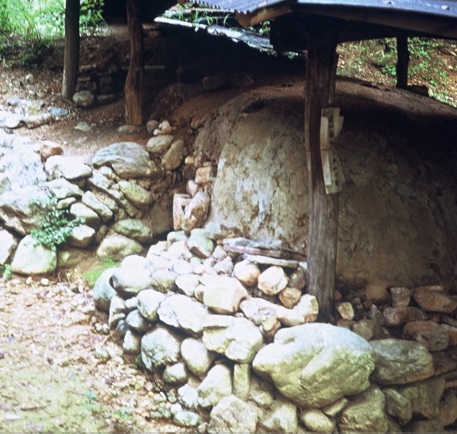 It might look like a
heap of rubble but it is the famed kiln of Toyozo Arakawa.
It might look like a
heap of rubble but it is the famed kiln of Toyozo Arakawa.
|
|
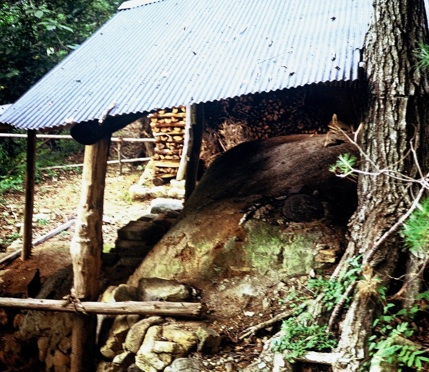 Side view of the kiln
of Toyozo Arakawa.
Side view of the kiln
of Toyozo Arakawa.
|
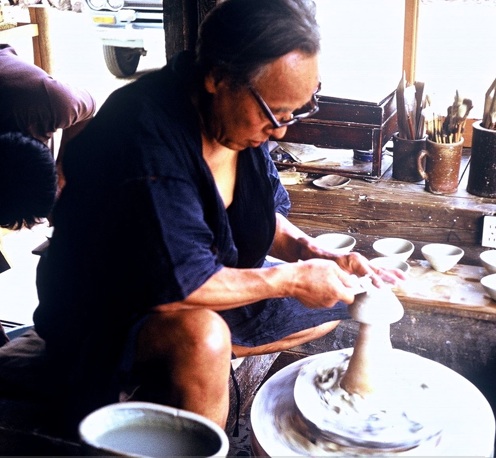
Fujio Koyama: the date is 1974 and this scholar/potter was
throwing pots for what was to be his last exhibition.
He died before the exhibition was held in 1975
|
|

The Living National Treasure Shoji Hamada in 1974 with a pot selected for the
Art Gallery of South Australia.
|

Shoji Hamada also signed a copy of the 'Unknown Craftsman, the writings of
Soetsu Yanagi' for me. He didn't grab the nearest ball -point but had ink
prepared especially - for a twenty second job.
|
|
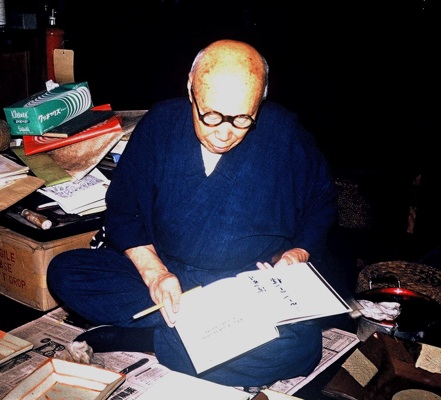 The Living National Treasure
Shoji Hamada in 1974
The Living National Treasure
Shoji Hamada in 1974
|
 At the home and workshop
of Tatuzo Shimaoka in 1974
At the home and workshop
of Tatuzo Shimaoka in 1974
 Mervin Feeney, 1980.
Mervin Feeney, 1980.
potter, engineer, industrial chemist,
friend and teacher.
|
|
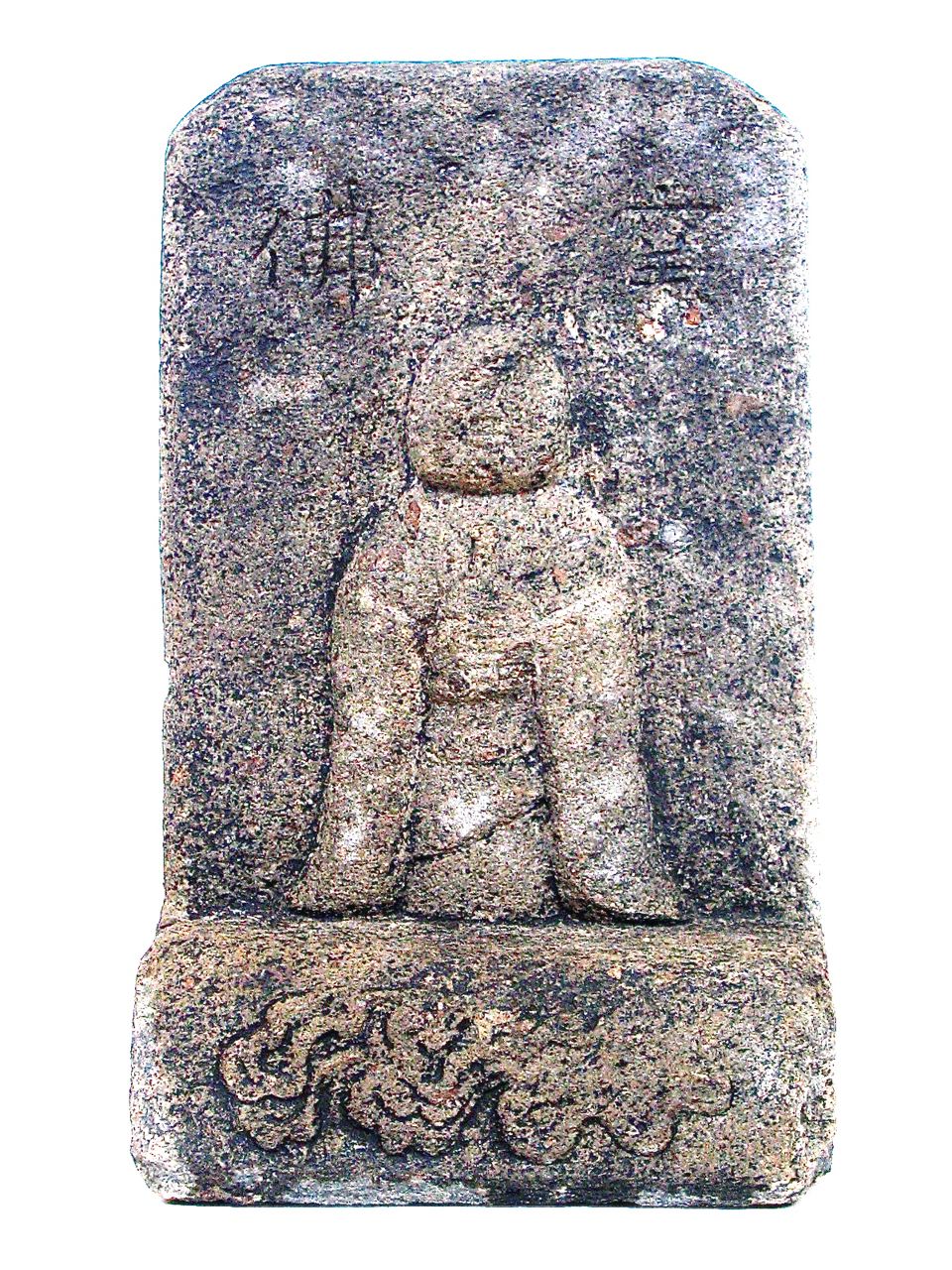
A potter's kiln-god. Holding a tokkori, with flames and inscribed
Buddha and Kiln. Who knows the origin of this piece. I showed
the picture to Bernard Leach, shortly before he died and
remarked on the coincidence of this piece coming into my hands.
He poked me the with a bony finger and remarked 'this was no
coincidence.' I like to think he may may have been right.
|
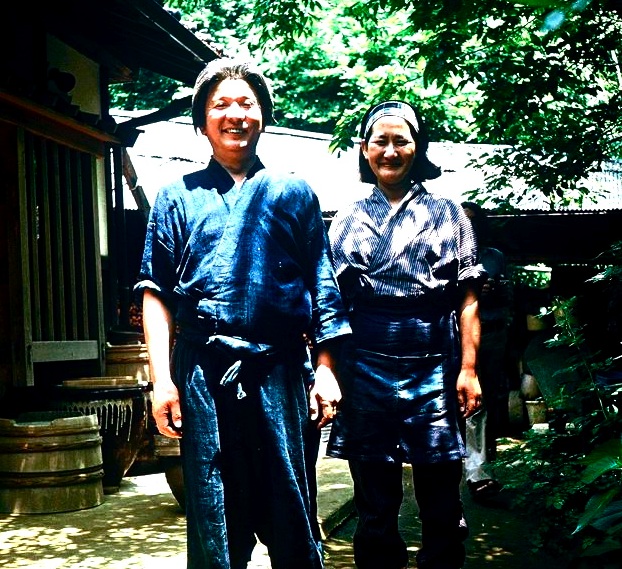 Seimei and Kyo Tsuji
at their home and workshop in the near country outside Tokyo.
Seimei and Kyo Tsuji
at their home and workshop in the near country outside Tokyo.
www.e-yakimono.net
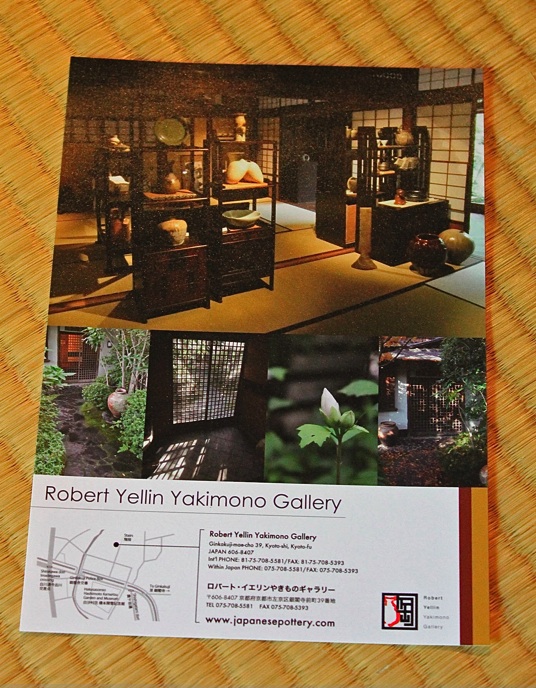
Robert Yellin's
gallery is a must for those visiting Kyoto. Close by Ginkakuji
temple his home/gallery is in a classical Japanese house and
his collection of pots is splendid.
His gallery link is below. |
|
PILBARA
 The Pilbara area of Western Australia.
The Pilbara area of Western Australia.
|

The Pilbara area of Western
Australia. Remote, vast, the source of iron oxide.
| |

Sunset in the Pilbara
|
 MILTON MOON in his workshop at Summertown in 1990
MILTON MOON in his workshop at Summertown in 1990
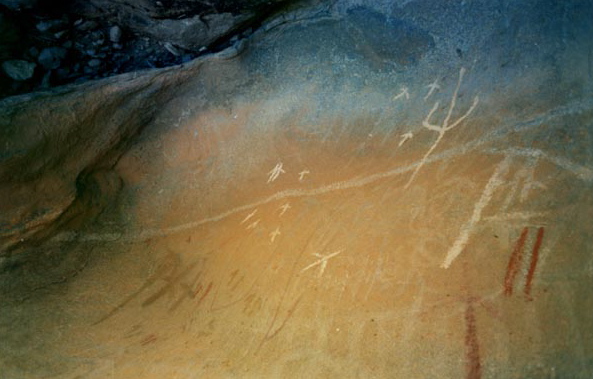
Mt Bimba - Olary Uplands.,
South Australia, Aboriginal rock painting

Mt Bimba, South Australia, Aboriginal rock painting
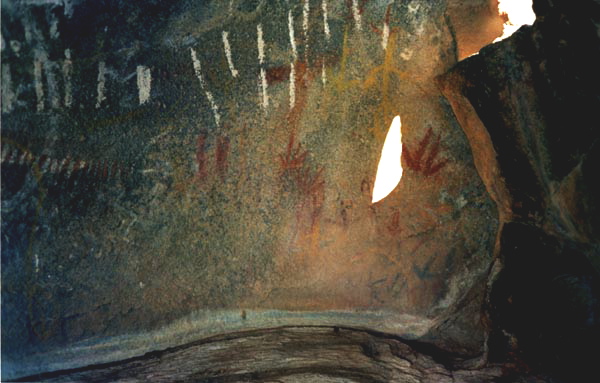
Mt Bimba, South Australia, Aboriginal rock painting
|

Michael Cardew on a visit
to Brisbane in the late 1960's.
| |
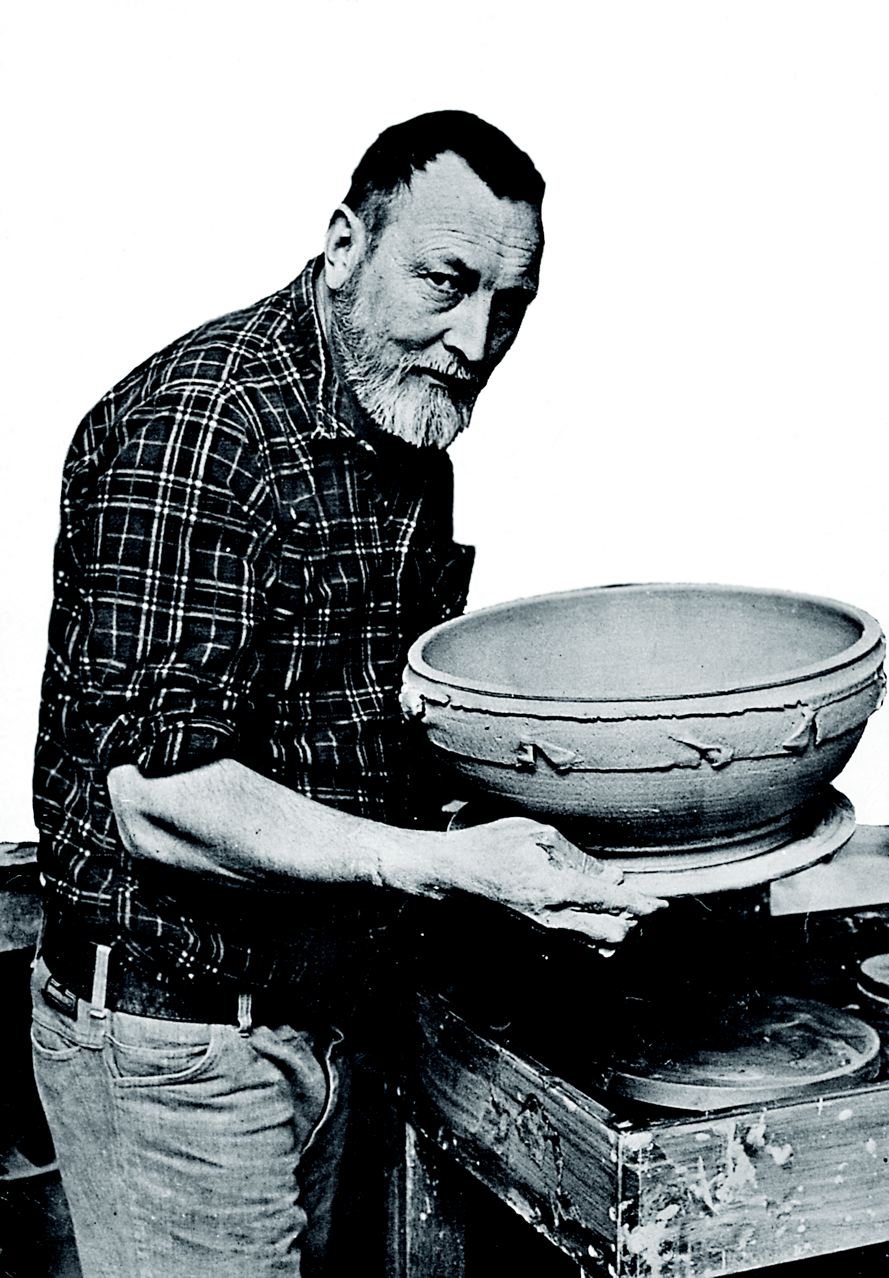 Harry Memmott, 1974.
Harry Memmott, 1974.
|
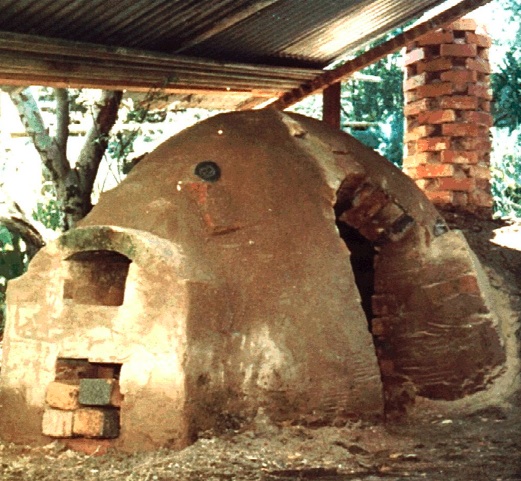
Anagama
This kiln was built and used at Summertown from the late 1970's
until its demolition. It is loosely referred to as an 'Anagama.'
It is said that the first 'anagama' in Japan came via Korea in
the 5th C. Japan has many historic kiln sites and many of the
original 'anagama' were literally little more than enlarged 'rabbit
burrows' excavated into sloping mounds, or hills. Over time they
became more sophisticated, and now, in many different forms,
can be found all over the potting world. They were (and mostly
are) wood-fired, but this one at Summertown was fired with both
gas and wood. |
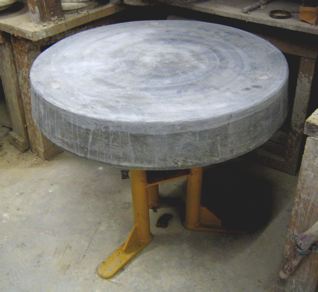
Te rokuro - a hand wheel,
the only ones I use.
The wheel-head was first used
as a heavy kick-plate for a 'kick wheel' made by a friend in Queensland.
We altered the design so that the kick-base became the wheel
head for quite low hand-wheels which I had sent to
South Australia. Since then, over thirty years, it
has evolved even further through the creative skill of an engineering
friend, Mal Mead to become the only wheel I feel comfortable
using.It is an 'intimate' wheel to use and I feel a closer part
of the whole process.
| | 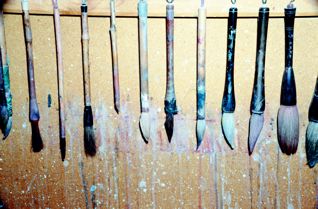
Tools of trade - Japanese and
Chinese brushes
Having used brushes most of my life I regard them with the same fondness
as the hand-wheels I use. On every visit to Japan one place constantly
visited was a special shop in Kyoto that sold brushes and paper. Every
brush has an expression special to it and one must find out what the brush
can do and learn to work with it.
|
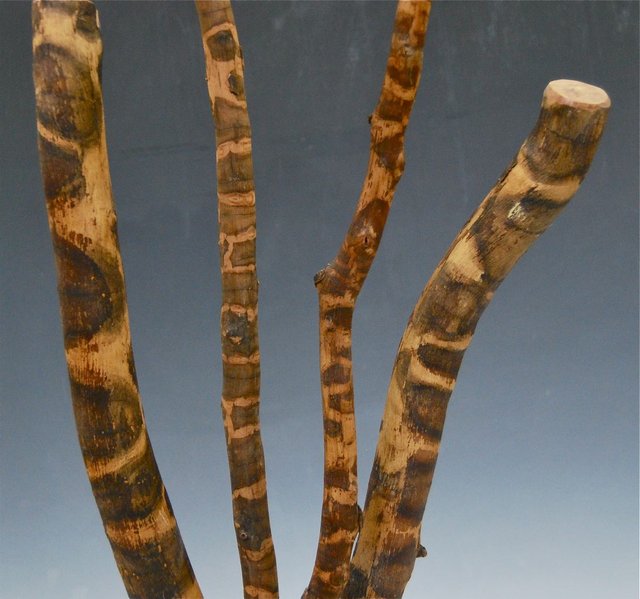
| People ask where
does inspiration come from. I live in suburban Adelaide and these
are 'droppings' from a Lemon-scented gum tree. When the bark
is shed each year, around November, smaller branches seem not
to shed bark but the bark shrinks as it loses moisture and fungus
invades and stains the wood. People often ask whether they were
painted by aboriginal people and are surprised when I suggest
that this sort of natural happening might be just one of the
sources of the Aborigines incredible and often brilliant visual
vocabulary. 2013 |


 The Pilbara area of Western Australia.
The Pilbara area of Western Australia.
 MILTON MOON in his workshop at Summertown in 1990
MILTON MOON in his workshop at Summertown in 1990
























